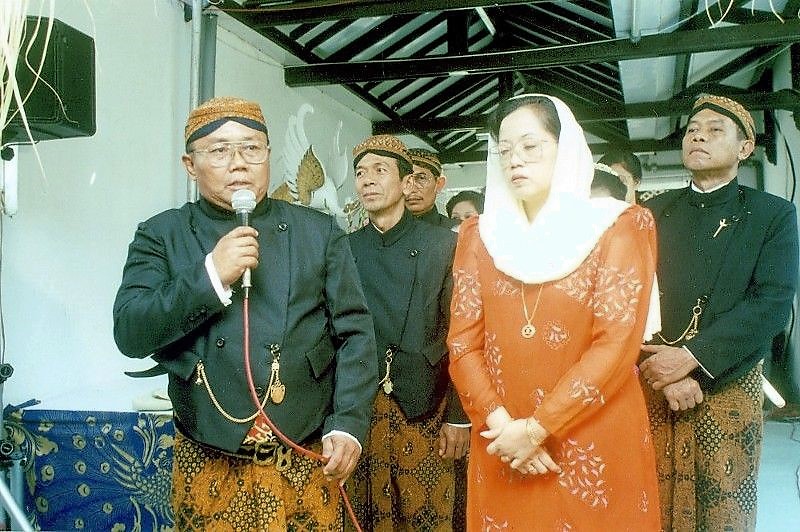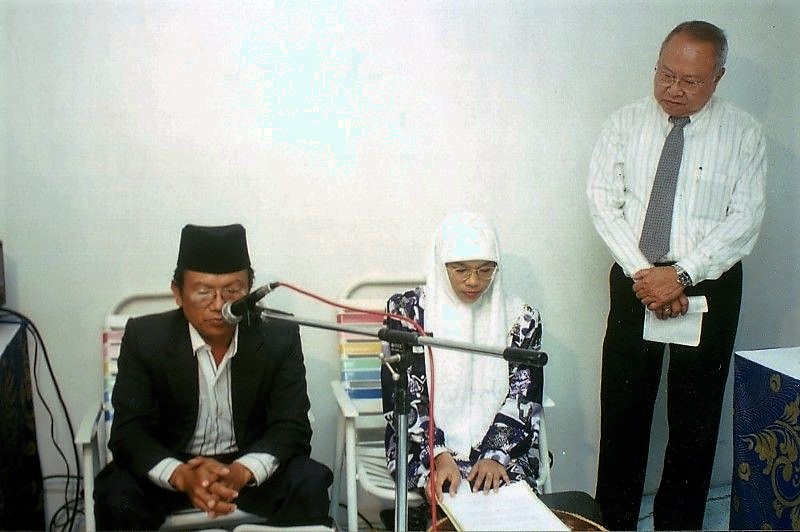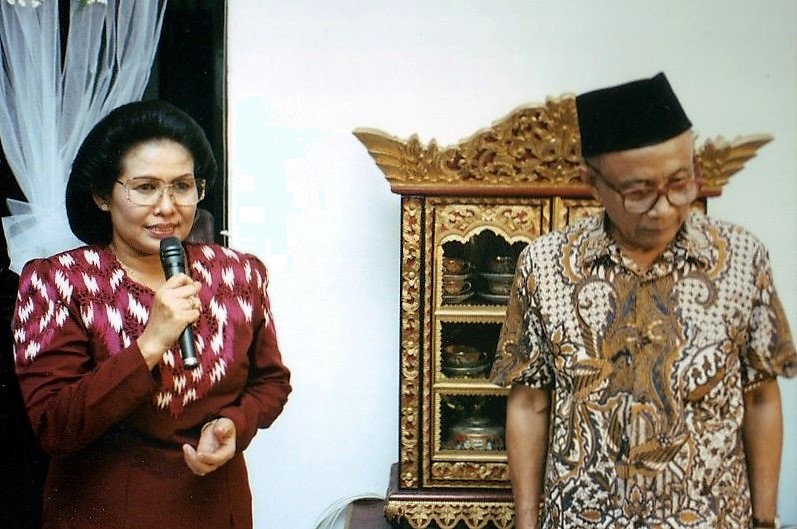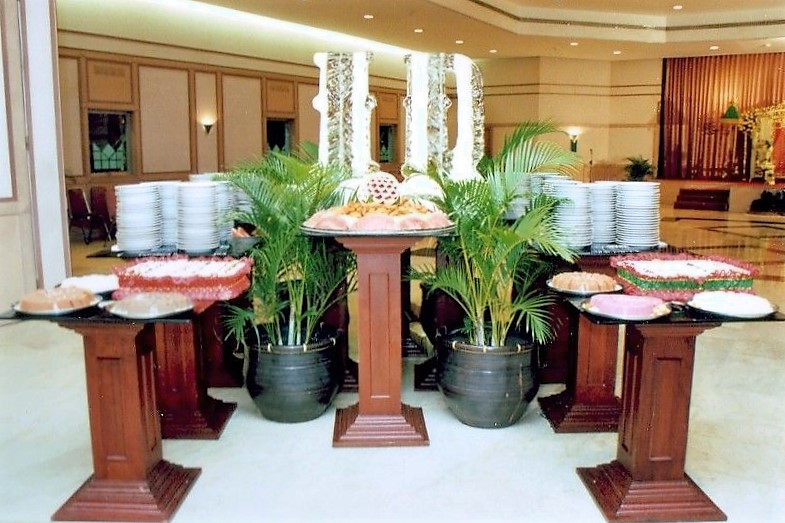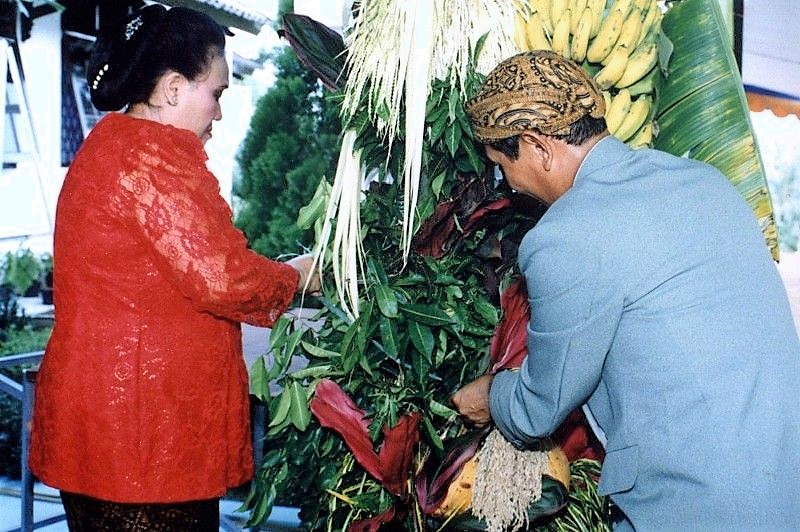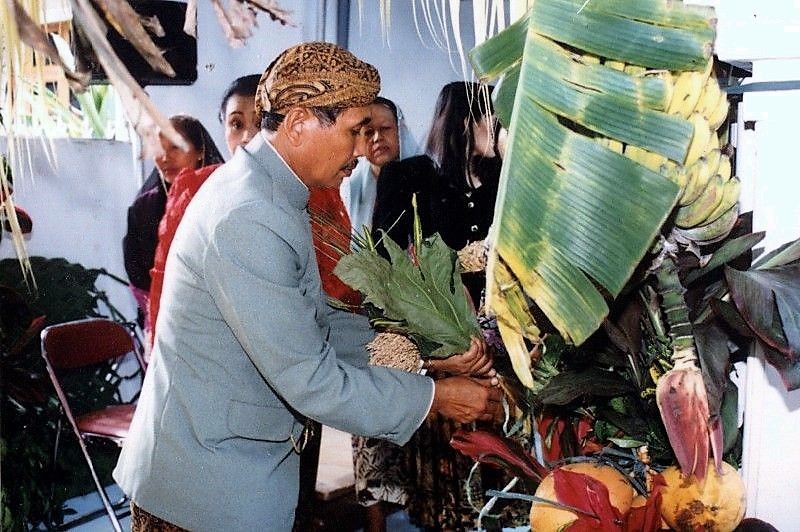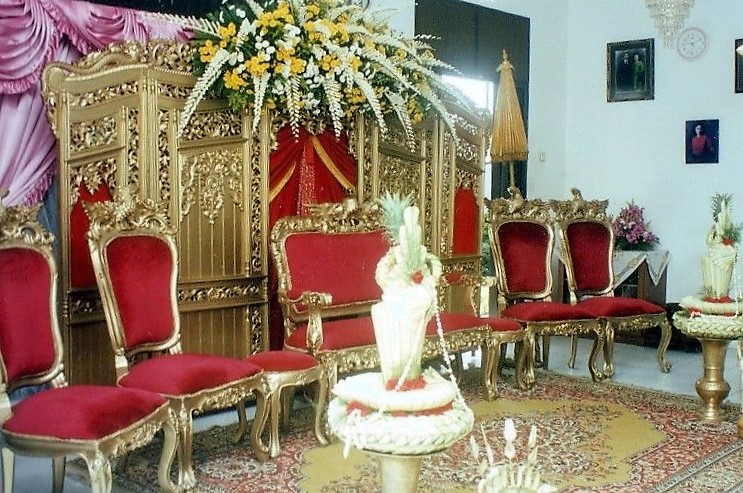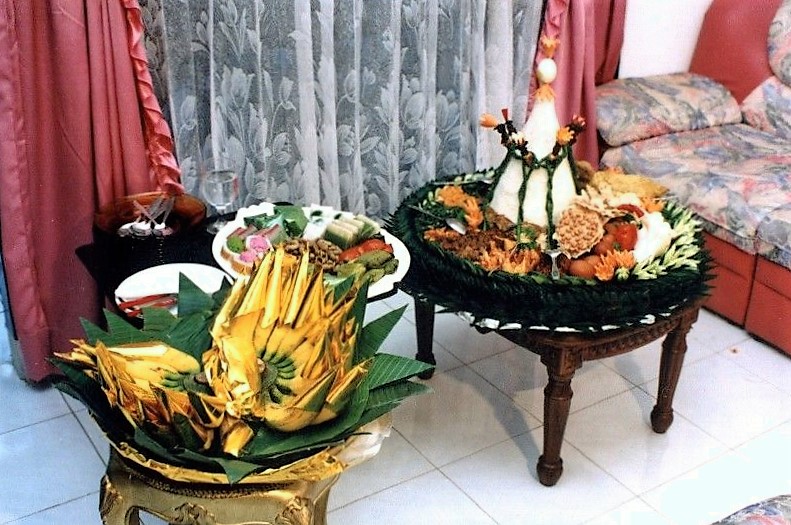Javanese Wedding - Preparations
The PEMAES and the Wedding Committee:
A complete Javanese wedding ceremony has several complicated traditional rituals. In that event, the role of a Pemaes, a traditional make-up woman who leads the whole ceremony, is very important. She takes care of the make-up and dressing of the bride and bridegroom, the different kind of offerings, the different kind of ceremonies during the event, etc. Usually, she can also lend a complete wedding dress, ornaments and equipment necessary for a wedding party.
The wedding party should be prepared carefully as it contains many things to do, no matter which ceremony is chosen. A small wedding committee of close relatives and friends from both families is set up. The size depends on how big the party has to be and on how many guests will be invited (300, 500, 1000 or more guests). In fact, a wedding ceremony is a big show, reflecting the families standing in the society.
This committee has to organise the whole wedding: the wedding protocol, food and beverages, gamelan music and dance, decoration of the reception hall, master of ceremony, witnesses for Ijab, welcoming speech during the reception, transportation, communication, security, and so on. The most important thing to prepare is no doubt the execution of Ijab (the religious and civil registration which legalises the couple as legitimate husband and wife)
TARUB Decoration:
Usually one day before the wedding party, the gate of the house of the bride’s parents is decorated with Tarub (plant decorations), which consists of different Tuwuhan (plants and leaves).
- Two banana trees with stem of ripe bananas meaning: The husband will be a good leader of his family. As banana trees grow easily everywhere, the couple can also live well and happy everywhere, in good terms with the environment.
- A pair of Tebu Wulung (reddish sugar cane) meaning: The whole family comes together with a strong and a wise mind.
- A cengkir gading (half-ripe coconut) meaning: The couple loves each other and they always will take care of their loved ones.
- Different fresh leaves, such as of banyan tree, alang-alang (tall, coarse grass), dadap srep (flowering trees) meaning: the couple should live in safety and protect the family.
On top of this, on the gate you will find bekletepe (ornaments made from plaited coconut leaves) to drive out evil spirits and as a sign that a wedding ceremony takes place in this house.
KEMBAR MAYANG Decoration:
Kembar Mayang is a kind of bouquet made of different kind of leaves (mainly coconut leaves stuck into a banana trunk). It is a very beautiful decoration with a broad symbolic meaning:
- It has a mountain like shape: A mountain is high and big, symbolising a man should have a lot of knowledge, experience and patience.
- Keris (kris, double-bladed dagger): The couple should be careful in life.
- Whips: The couple should be always optimistic with the desire to have a good life.
- Umbrellas: The couple must protect their family.
- Grasshoppers: The couple should be energetic, quick in thinking and making decisions in order to keep the family safe.
- Birds: The couple should have a high life-motivation.
- Beringin (banyan tree) leaves: The couple should always protect the family and other human beings.
- Kruton leaves: The leaves protect them against evil spirits.
- Dadap srep leaves: The leaves could be used as a cold compress to lower fever, symbolising the couple should always have a clear mind and calmness to solve any problems (calm down the feeling and cool down the head).
- Dlingo Benglé herbs: These herbs cure infection and other diseases; they are used to get protection against evil spirits.
- Patra Manggala flowers: Used to beautify the bouquet.
SAJEN Offering:
Before the installation of Tarub and Bekletepe, a special Sajen (offering) must be made.
Traditional Sajen (offering) in Javanese ritual is considered very important. The symbolic meaning of the Sajen is to get blessings from the ancestors (for their souls should live in peace eternally) and to get protection against evil spirits. The Sajen should be placed in all the places where a ceremony takes place, such as in the bathroom, in the kitchen, under the gate, under the Tarub decoration, in the street nearby the house etc.
Normally Sajen consists of:
- Tumpeng Robyong, a yellow rice cone with decoration.
- Tumpeng Gundul, a yellow rice cone with no decoration.
- Chicken, meat, tempe, bread and eggs.
- Seven kinds of porridge.
- Fresh fruit: bananas and other fruits.
- A peeled coconut and some coconut sugar.
- Sweet cookies made of glutinous rice.
- Tea and coffee.
- Cigar and pipe made of papaya leave.
- Jamu (herbal medicine).
- A lantern, which is lighted.
- Telon flowers (cananga, jasmine, magnolia) in bowl filled with holy water.

